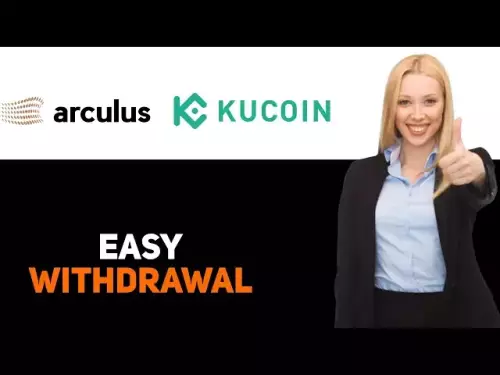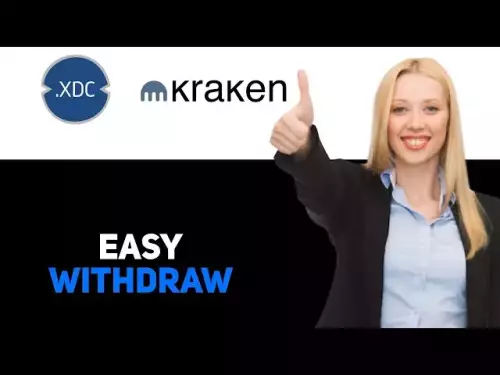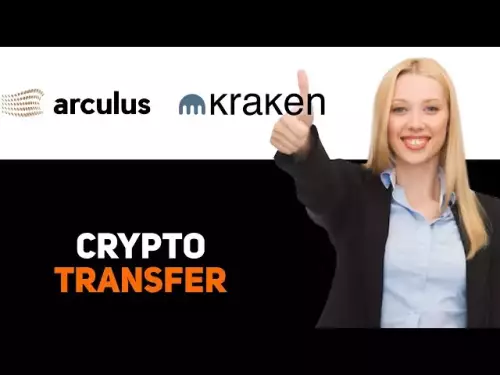 |
|
 |
|
 |
|
 |
|
 |
|
 |
|
 |
|
 |
|
 |
|
 |
|
 |
|
 |
|
 |
|
 |
|
 |
|
Cryptocurrency News Articles
RBI's Bold Move: CBDC and Asset Tokenization Transforming India's Financial Landscape
Oct 10, 2025 at 05:02 pm
RBI is spearheading a revolution in India's financial system by integrating CBDC with asset tokenization, promising efficiency and transparency.

The Reserve Bank of India (RBI) is making waves by integrating Central Bank Digital Currency (CBDC) with asset tokenization. This move aims to modernize financial infrastructure, enhance efficiency, and boost transparency. Let’s dive into what this means for India’s financial future.
RBI's Unified Markets Interface (UMI)
The RBI has conceptualized a Unified Markets Interface (UMI) designed as a next-generation financial market infrastructure. Announced at Global Fintech Fest 2025 by RBI Governor Sanjay Malhotra, this interface will tokenize financial assets and settlements using wholesale CBDC. In simpler terms, it’s set to make financial trading between banks fully digital, faster, and more secure through digital tokens.
What is Asset Tokenization?
Asset tokenization involves converting real-world assets, such as gold or even bank deposits, into digital tokens on a blockchain. This opens up new possibilities for financial markets, offering global trading opportunities with enhanced transparency and efficient settlements. The RBI conducted a pilot on deposit tokenization where deposits held at banks are represented as tokens, transferable across systems. The goal? One token equals one unit of deposit, improving market efficiency with lower friction and better transparency.
The Role of CBDC
A CBDC is a digital form of a country's fiat currency, essentially a digital version of cash issued by the central bank. In India, this is the Digital Rupee (e₹), mirroring the physical Rupee. It functions as legal tender, providing a secure digital representation of cash for transactions. The Digital Rupee comes in retail (CBDC-R) for public and business use and wholesale (CBDC-W) for financial institutions.
The RBI has been actively piloting CBDC. A wholesale pilot launched in November 2022 settled government securities transactions, followed by a retail pilot in December 2022 for P2M and P2P transactions. By March 2025, retail CBDC usage significantly increased, while wholesale usage saw a decrease. The e₹ has been tested in various use cases, including direct benefit transfers and loans for tenant farmers.
How Tokenized Deposits Work
With tokenized deposits, customers deposit assets with a trusted custodian, like a bank, which then issues digital tokens on a blockchain network. Customers can trade these tokens while the real asset remains securely stored. The RBI is reportedly planning to explore tokenization in money market instruments further.
RBI's Deposit Tokenisation Pilot: A Deeper Dive
Launched on October 8, 2025, the RBI's deposit tokenisation pilot marks a significant stride in modernising India’s financial infrastructure. Operating on the wholesale CBDC platform (e₹-W), it involves major banks and aims to enable faster, more secure settlements by representing bank deposits as digital tokens.
Suvendu Pati, Chief General Manager at the RBI, highlighted that deposit tokenisation could revolutionise interbank transactions by reducing settlement time and operational costs. The pilot focuses on interbank transfers and settlements, assessing technological feasibility, security, and scalability before broader applications.
Looking Ahead
The RBI plans to extend tokenization to money market instruments like certificates of deposit and commercial paper. This move aims to enhance market liquidity, transparency, and operational efficiency in short-term funding markets. Experts believe deposit tokenization could bridge existing fiat-based systems with fully tokenized financial infrastructure, potentially paving the way for 24/7 settlement and real-time programmable payments.
Using e₹ Today
You can currently use the e-Rupee to make payments to merchants and individuals, similar to using cash or UPI. Major banks offer digital rupee apps for transactions. It’s considered safe, as it’s a sovereign currency issued by the RBI and easily convertible into cash.
Conclusion
The RBI's push for deposit tokenization reinforces India’s leadership in digital payments and financial innovation. By balancing innovation with stability, the central bank ensures India remains at the forefront of financial technology advancement. Who knows, maybe one day we'll all be trading tokenized chai lattes! Keep an eye on this space—the future of finance is looking bright, and it's powered by the RBI's innovative spirit.
Disclaimer:info@kdj.com
The information provided is not trading advice. kdj.com does not assume any responsibility for any investments made based on the information provided in this article. Cryptocurrencies are highly volatile and it is highly recommended that you invest with caution after thorough research!
If you believe that the content used on this website infringes your copyright, please contact us immediately (info@kdj.com) and we will delete it promptly.
-

-

-

-

- Decoding Crypto Trends: Bittensor's Bull Run, Cardano's Dip, and LivLive's Presale Buzz in 'Uptober 2025'
- Oct 11, 2025 at 09:01 am
- Analyzing the latest crypto market moves: Bittensor's surge, Cardano's potential pullback, Aurelion's gold-backed treasury, Solana's transaction dip, and LivLive's presale allure. Your guide to navigating crypto trends.
-

-

-

-

-
























![[4K 60fps] Prisma by novichokk (1 Coin) [4K 60fps] Prisma by novichokk (1 Coin)](/uploads/2025/10/14/cryptocurrencies-news/videos/k-fps-prisma-novichokk-coin/68ee49804ba00_image_500_375.webp)






































